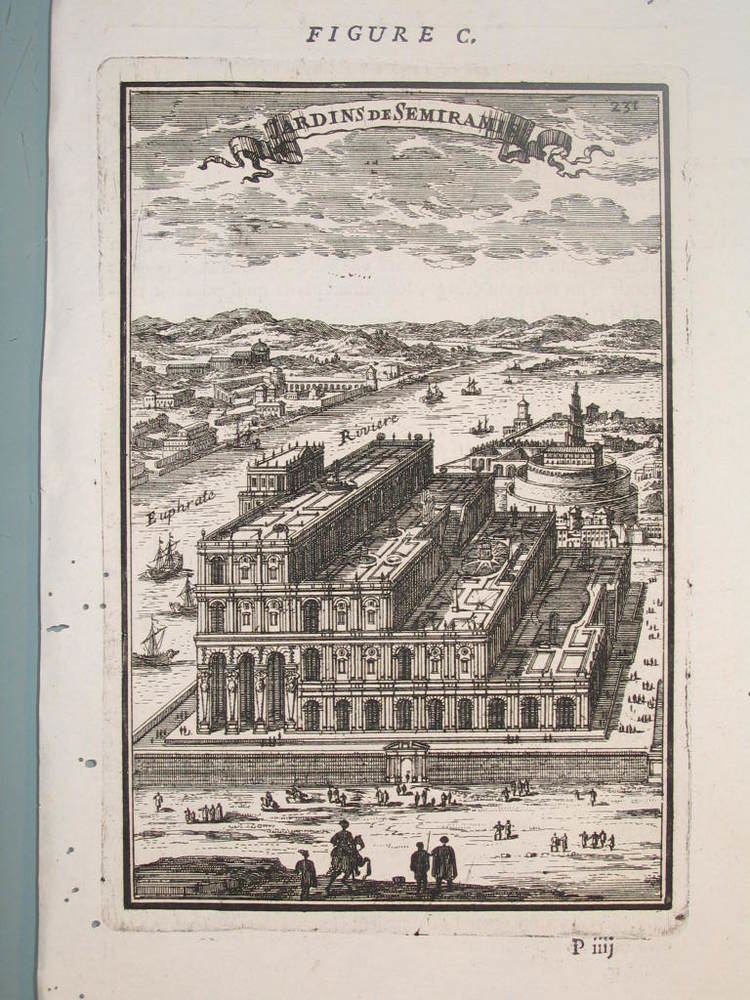Location Babylon Opened 2160 BCE (2160 BCE) | Status No longer existent | |
 | ||
Start East shore of Euphrates river in Babylon End West shore of Euphrates river in Babylon | ||
The Euphrates Tunnel was allegedly a 929 metres (0.577 mi) long tunnel built by Queen Semiramis to connect the two halves of the city of Babylon, in the old Mesopotamia.
Archaeologists believe it was built between 2180 and 2160 BCE.
No other sub-aqueous pedestrian tunnel was attempted until Marc Brunel built the Thames Tunnel beginning in 1824 CE.
Description
Construction began with a temporary dam across the Euphrates river, and proceeded using a "cut and cover" technique.
The tunnel spanning 12 feet high and 15 feet wide, it is presumed that it was used by pedestrians and horse driven chariots and connected a major temple with the royal palace on the other shore of the river, it was supposedly lined with brick and waterproofed with asphalt.
A description of the tunnel as being built and used by Queen Semiramis is given by Diodorus (fl. 50 BCE) in the Bibliotheca Historica:
"After all these in a low ground in Babylon, she sunk a place for a pond, four-square, erery square being three hundred furlongs in length, lined with brick, and cemented with brimstone, and the whole five-and-thirty feet in depth: into this having first turned the river, she then made a passage in form of a vault, from one palace to another, whose arches were built of firm and strong brick, and plaistered all over on both sides with bitumen, four cubits thick. The walls of this vault were twenty bricks in thickness, and twelve feet high, beside and above the arches; and the breadth was fifteen feet. This piece of work being finished in two hundred and sixty days, the river was turned into its antient channel again, so that the river flowing over the whole work, Semiramis could go from one palace to the other, without passing over the river. She made likewise two brazen gates at either end of the vault, which continued to the time of the Persian empire."
Philostratus (d. 250 CE) also describes the tunnel's construction in the Life of Apollonius of Tyana:
"And [Babylon] it is cut asunder by the river Euphrates, into halves of similar shape; and there passes underneath the river an extraordinary bridge which joins together by an unseen passage the palaces on either bank. For it is said that a woman, Medea, was formerly queen of those parts, who spanned the river underneath in a manner in which no river was ever bridged before; for she got stones, it is said, and copper and pitch and all that men have discovered for use in masonry under water, and she piled these up along the banks of the river. Then she diverted the stream into lakes; and as soon as the river was dry, she dug down two fathoms, and made a hollow tunnel, which she caused to debouch into the palaces on either bank like a subterranean grotto; and she roofed it on a level with the bed of the stream. The foundations were thus made stable, and also the walls of the tunnel; but as the pitch required water in order to set as hard as stone, the Euphrates was let in again on the roof while still soft, and so the junction stood solid".
